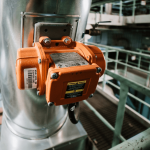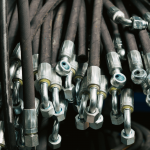Guide to Selecting Hydraulic Pumps: Types, Sizing, Maintenance
Hydraulic systems power a vast range of industries, from manufacturing and construction to transportation and energy. At the heart of these systems are hydraulic pumps, which convert mechanical energy into hydraulic energy by moving fluid through the system under pressure. Choosing the right pump ensures optimal performance, efficiency, and system longevity.
But with so many configurations, specifications, and maintenance requirements, how do you know which hydraulic pumps are right for your operation?
Types of Hydraulic Pumps
Gear Pumps
Gear pumps are the most common type due to their simple design and reliability. They operate using meshing gears to move fluid through the system.
- Pros: Affordable, durable, and easy to maintain
- Cons: Limited efficiency at higher pressures
- Ideal for: Industrial machinery, agricultural equipment, and mobile hydraulics
Vane Pumps
Vane pumps use a series of sliding vanes in a rotor to create a smooth flow.
- Pros: Quieter operation and consistent output
- Cons: Sensitive to contamination and less tolerant of high-pressure conditions
- Ideal for: Machine tools and low-noise environments
Piston Pumps
Piston pumps are known for high efficiency and pressure capabilities. They use pistons moving within cylinders to create flow.
- Pros: High performance, adjustable displacement, and excellent efficiency
- Cons: Higher upfront cost and maintenance complexity
- Ideal for: Heavy machinery, aerospace, and high-pressure applications
Screw Pumps
Screw pumps are known for high efficiency and pressure capabilities. They use pistons moving within cylinders to create flow.
- Pros: High performance, adjustable displacement, and excellent efficiency
- Cons: Higher upfront cost and maintenance complexity
- Ideal for: Heavy machinery, aerospace, and high-pressure applications
Proper Sizing for Hydraulic Pumps
Selecting the correct size is critical for efficiency and safety. Undersized hydraulic pumps can cause overheating, while oversized ones waste energy and increase costs. Here’s how to size your pump correctly:
- Determine Flow Rate Needs: The required flow rate is based on actuator speed and cylinder size. A proper flow ensures your system operates smoothly without overworking components.
- Match Pressure Requirements: Identify the maximum operating pressure your application needs. The pump must meet or exceed this without excessive energy use.
- Consider System Efficiency: Efficiency ratings vary between pump types. For continuous-use systems, investing in a high-efficiency pump can save substantial long-term costs.
- Account for Fluid Characteristics: Viscosity, temperature, and fluid type affect pump performance. Always select a model compatible with your hydraulic fluid’s properties.
- Think About Environmental Conditions: Temperature, humidity, and dust levels all influence how well your pump will perform over time. In rugged environments, opt for a model with robust sealing and filtration options.
Maintenance and Care for Hydraulic Pumps
Proper maintenance keeps hydraulic pumps performing at their best and extends their lifespan. Neglect can lead to costly downtime and system damage. Here are key practices to follow:
Regular Fluid Checks
Hydraulic fluid quality directly impacts system performance. Regularly inspect for contamination, water, or air bubbles. Replace the fluid according to manufacturer recommendations.
Filter Replacement
Clogged filters restrict fluid flow and increase system pressure, leading to wear. Replace filters at the recommended intervals, or sooner in demanding environments.
Monitor Temperature and Pressure
Sudden temperature or pressure fluctuations may indicate underlying issues such as cavitation, leaks, or excessive load. Install sensors to track performance and catch problems early.
Inspect Seals and Connections
Leaks are one of the most common hydraulic issues. Regularly check seals, hoses, and fittings for wear, cracks, or looseness.
Keep a Maintenance Log
Documenting inspections, repairs, and replacements helps identify recurring issues and improve long-term maintenance strategies.
Air & Hydraulic Equipment: Hydraulic Pump Services & Solutions
From system design to field service, Air & Hydraulic Equipment delivers complete fluid power and automation solutions for manufacturers and industrial facilities. Whether you’re upgrading existing machinery or designing a new system, our specialists can help you choose the right hydraulic pumps and components to meet your exact needs.
Ready to optimize your hydraulic system? Contact us at Air & Hydraulic Equipment to connect with our team of motion and fluid power experts today.










